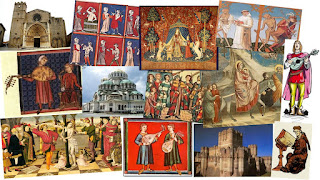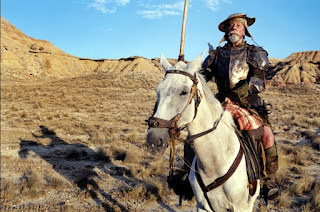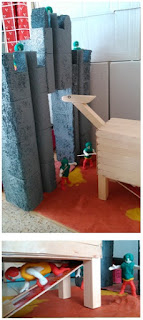Here you have the photos of your model-making experience. Congratulations for your imagination and effort. Enjoy!
As you can see, this year we have a quite diverse collection, from Prehistoric times, with this cave-painters...
... the Castro of Ulaca or with several megaliths monuments, such as the famous Cromlech of Stonehedge...
We also have a good example of a Mesopotamian Zigurat:
Of course, we have a small but interesting Egyptian section:
From Ancient Greece we have one Atheneian trirreme...
... and the Troian Horse! Look inside!
The Roman Empire is, as usual, the bigger section. Today we have several examples of Roman cities (Pompeii is a classic):
An important building is the Senate (It looks better with some performers inside, isn't it?). From that point, we can cross the bridge to attemp a chariot race in the circus...
... have a good time in the thermal baths...
... or enjoy some of the monuments:
One of the borders of the Roman Empire was the Hadrian's Wall. It divided the Roman Britannia from the wild North:
Another important moment in the British History was the Norman conquest. Here you have a good example of a Norman castle and motte.
Which one do you like the most? :-)













































